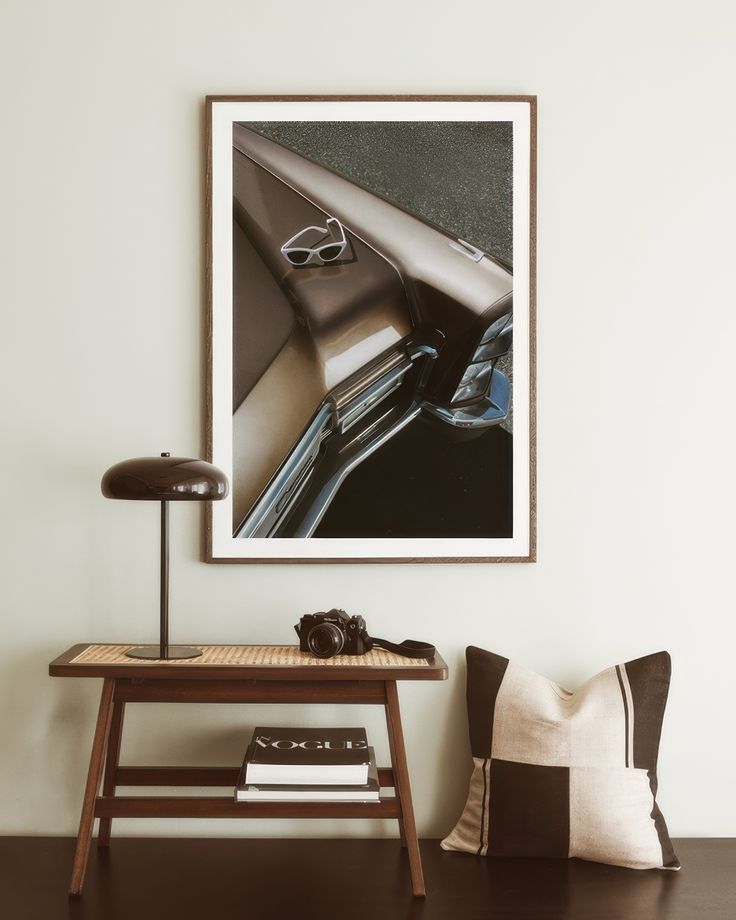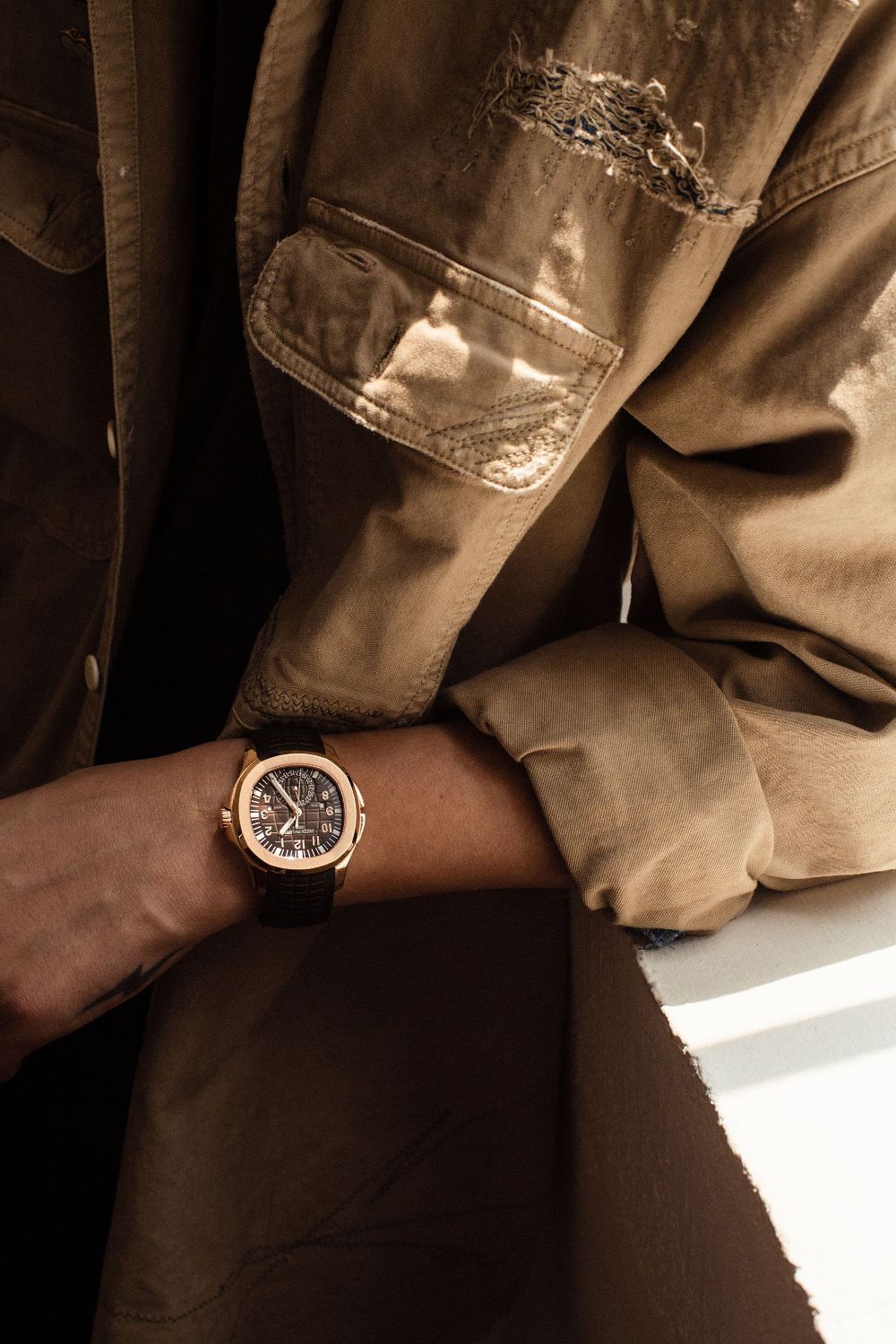We Used to Shoot for the Screen. Now We Shoot for the Scroll.
In the age of social media, videography has been hijacked by a format that was never meant to serve the art: 9x16.

From Cinematic to Scroll-Matic
In the age of social media, videography has been hijacked by a format that was never meant to serve the art: 9x16. Vertical video has become the new default - not because it's better, but because it fits in your hand. And in the rush to feed algorithms and chase engagement, something deeper is being lost: the integrity of the frame.
True video composition thrives on space. The 16x9 frame gives you room to breathe, to lead the eye, to build moments that land. It’s not just a shape - it’s a language. When we’re forced into vertical orientation, everything is compromised. Landscapes are sliced. Blocking becomes awkward. Group scenes feel jammed together. It’s like trying to paint a mural on a bookmark.
But this isn’t just about platform trends - it’s about agency choices. Agencies have become factories of content quantity, feeding clients what they ask for, instead of guiding them toward what actually resonates. The demand has shifted from story to volume: more formats, more posts, more edits. But when quantity is the goal, quality always becomes the casualty.
Instead of leading clients toward creative strategy, many agencies have defaulted to reactive production. Vertical-first. Speed over story. Engagement over emotion. But the truth is, a hundred forgettable clips won’t earn what one meaningful film can. Great work isn’t just delivered - it’s defended. If we want to elevate the industry, it starts with agencies pushing back, not giving in.
You’d never see a Roger Deakins shot framed vertically - it’d be a crime against cinema. Those scenes don’t just use space - they command it. Cropping them vertically would be like cropping the horizon out of a sunset.

Art Direction vs. Algorithm Direction
And yet, here we are - rotating £10,000 cinema rigs sideways to chase fleeting trends. Framing shots based on where subtitles and like buttons won’t get in the way. Designing scenes not for depth or emotion, but for “safe zones.” All to keep up with platforms that value retention over resonance.
But look at the brands that actually shape culture; Nike, Adidas, Apple. Their most powerful campaigns? Widescreen. Cinematic. Intentional. Nike’s “You Can’t Stop Us.” Adidas’ “Impossible is Nothing.” Apple’s “Shot on iPhone”. These films feel more like short documentaries than ads. They don’t shoot for the scroll; They shoot for impact. For legacy.
You might see a vertical cut of those ads online - but that’s not where the story starts. That’s the adaptation, not the intention. Even luxury brands like Louis Vuitton, Burberry, Mercedes-Benz - they all understand this. Their identity lives in the cinematic frame. Because some emotions just don’t fit inside a vertical box.
Meanwhile, most of the creative world is caving in. We’re being told to shoot vertically “because that’s what performs.” But performance isn't the same as power. Just because something fits the feed doesn’t mean it moves people.
Big Dreams, Tiny Deadlines
And let’s talk about budgets for a second. The same companies who drop $500,000 on a polished brand film shot on ARRI, graded to perfection, scored like a movie - turn around and offer a freelancer $300 to “make it go viral on Reels.” They want a 9x16 cut, same day, with subtitles, edits, hooks, and music, “just like Nike” - except without any of the budget, time, or team.
You can’t expect Super Bowl-level impact on a Story budget.
And it’s not just about how content gets repurposed after the fact - it starts even earlier. More and more, brands approach projects already expecting social-first deliverables that somehow look, feel, and hit like big-budget campaigns. They want impact, but not the investment. They want cinematic, but with a 24-hour turnaround. From the first meeting, the brief already assumes: “We’ll need a hero film, 12 cutdowns, Reels, TikToks, Stories, behind-the-scenes, and UGC-style edits.” But nowhere in that conversation is there time to actually craft a story.
They’ll reference Nike, Apple, or Adidas as the benchmark but forget those campaigns had full production teams, months of pre-production, and an actual narrative strategy. Then they hand a solo creative a shot list and say, “Can we do this next week?” No time for framing. No budget for crew. No space to experiment or evolve. Just plug in and output.
The expectation has become: create emotionally-driven, cinematic content - but faster, cheaper, and vertically. And somehow, make it go viral too with the same impact.
Advertising That Actually Resonates
This isn’t just a filmmaking conversation, it’s an advertising one. Great ads have always been rooted in story and strategy, not speed. When a frame is crafted with intent, the product becomes part of a narrative, not just a punchline between swipes. Think about Guinness’“Surfer”, or Apple’s“1984”. Those weren’t made to be squeezed into a phone screen. They were built to stop you in your tracks, to feel like cinema. But now, agencies and brands are under pressure to churn out vertical-first content on tight timelines, thinking it’s what the market demands. The result? Forgettable ads, templated trends, and missed emotional connections. You can’t shortcut resonance. You can’t algorithm your way to legacy. Advertising should lead culture, not follow it.
Not Against Vertical - Just Against Lazy
Yes, creators like Khaby Lame or Addison Rae built empires on vertical video, but they’re not crafting narratives. They’re crafting moments. That’s not a bad thing, but it’s a different thing. A TikTok trend can be hilarious. But it’s not a Herzog documentary. It’s not Moonlight. It’s not Beyoncé’s Lemonade. Those projects demand space, space to feel, to breathe, to evolve.
And let’s not forget how we got here.
Aspect ratios didn’t just happen. They evolved alongside the way we tell stories. We started with 4:3 - not because it was ideal, but because it matched the shape of early television sets. It was practical. Technical. But once filmmakers were given more space, they used it. 16:9 became the cinematic standard not just because screens got wider, but because stories got deeper. Directors began composing shots with meaning inside the frame; using symmetry, negative space, and motion to guide the viewer's emotions.
Widescreen changed everything.
Why the Frame Still Matters
It allowed for the quiet tension of a character sitting alone in a wide room. For two people to share a scene without ever touching. For a landscape to breathe. Films like Lawrence of Arabia, Blade Runner 2049, or The Revenant would not be what they are in a tight crop.
Even in modern filmmaking, the battle for aspect ratio is alive. Zack Snyder famously fought to keep his Justice League in the taller IMAX ratio - not to be different, but to show more verticality, more emotion in hero shots, more sky above and ground below. That decision was storytelling.
Wes Anderson, on the other hand, leans into the 4:3 frame in The Grand Budapest Hotel and others - not out of limitation, but for aesthetic. His quirky, center-framed style works because he chose the format intentionally. The frame becomes a tool, not a constraint.
The point is: great filmmakers don’t just shoot a story; they design the space the story lives in.
But now? We're being told to just crop it. That it’s “fine” to slice a perfectly composed 16x9 shot down the middle so it fits into a phone screen. But the moment you crop, you’re not just losing pixels; you’re losing intent. You’re removing context. You’re muting the meaning.
It’s not just inconvenient. It’s disrespectful to the craft.

Craft Over Clout
Even on YouTube, the creators we respect most - Casey Neistat, Peter McKinnon, Mark Bone - didn’t rise by obeying trends. They created worlds inside the frame. Casey’s chaotic city cuts, McKinnon’s moody wides, Bone’s intimate doc-style portraits - they all rely on the full width of the screen to land. Not gimmicks. Not TikTok zooms. Just powerful, composed, intentional storytelling.
And if you’re just starting out? I get it. Vertical feels like the path. You see the numbers. You hear, “This is what clients want.” But don’t let that trap you. Don’t build your foundation on temporary algorithms. Build it on frame, light, pacing, sound, story. Learn what makes a wide shot feel lonely. Learn why a slow dolly pushes emotion forward. Learn to use the frame before you let the frame use you.
Because this isn’t about being anti-vertical. This is about being pro-intention. It’s about knowing that how you frame something is what you’re saying. And not every story should be told on a phone screen with text over someone’s forehead.

Yes, This Is the Industry - But Should It Be?
Of course, some will say, “Well, this is just how it is now. Get used to it.” But accepting the status quo isn’t the same as evolving the craft. Yes, platforms change. Yes, audiences shift. But letting trends dictate creative standards is how we lose the soul of storytelling. The best work doesn’t follow culture - it shapes it. And every time we default to vertical because it’s “just the way things are,” we lower the bar. If you're in this industry to push boundaries, to make something meaningful, then “get used to it” isn’t good enough. We owe it to the craft - and to the audience - to ask for more. To protect the frame. To fight for work that lasts longer than a scroll.
Yes, the world is changing. Yes, platforms evolve. But the audience is smarter than we think. They can feel when something is crafted, and when it’s just content.
And here’s the truth: Videography isn’t just about filling a screen. It’s about creating something that lives beyond the screen. Something timeless. Something powerful. Something wide enough to carry a story that stays with someone long after they’ve stopped watching.
Some stories just weren’t meant to be told vertically. Let’s stop pretending they were. Shoot with purpose. Frame with intent. Not everything was meant to be scrolled.




